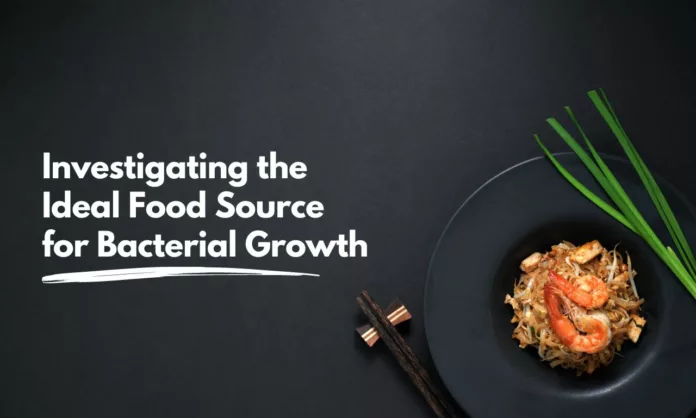Bacterial growth is a natural process that occurs everywhere, including within the human body and the environment. While many bacteria are harmless or even beneficial, certain types of bacteria can cause foodborne illnesses and other health issues. One critical factor influencing bacterial growth is the choice of food source. Not all foods provide an equally conducive environment for bacterial proliferation. In this article, we will delve into the factors that contribute to bacterial growth, discuss the types of foods that are ideal for bacterial growth, and explore ways to prevent bacterial contamination.
Table of Contents
Factors Affecting Bacterial Growth
Bacterial growth is influenced by several intrinsic and extrinsic factors. Intrinsic factors are inherent to the food itself, such as pH, water activity, nutrient content, and oxygen availability. Extrinsic factors include temperature, humidity, and storage conditions. A combination of these factors determines the potential for bacterial growth in a given food item.
Ideal Food Sources for Bacterial Growth
Certain foods provide an ideal environment for bacterial growth due to their nutrient content, moisture levels, and other intrinsic factors. Some of the most common foods that support bacterial proliferation include:
- High-Moisture Foods: Bacteria thrive in moist environments, making high-moisture foods such as meat, poultry, seafood, dairy products, and cooked grains highly conducive to bacterial growth.
- Protein-Rich Foods: Foods rich in protein, such as meat, eggs, and dairy products, provide an abundant source of nutrients that bacteria require for growth and reproduction.
- Neutral pH Foods: Foods with a pH close to neutral (around 7) create a favorable environment for various bacterial species. Examples include dairy products, meat, and cooked grains.
- Processed Foods: Processed foods often contain additives like preservatives and stabilizers, which can alter the natural microbial balance and create conditions that are suitable for bacterial growth.
- Prepared Foods: Foods that have been cooked, chopped, or otherwise processed are more susceptible to bacterial contamination due to increased surface area and disrupted protective barriers.
Common Bacterial Offenders
Several bacterial species are known for their ability to thrive in certain food environments. Some examples include:
- Salmonella: Often associated with raw poultry, eggs, and unpasteurized dairy products, Salmonella thrives in high-protein, moist environments.
- Escherichia coli (E. coli): E. coli can proliferate in undercooked ground beef and other meats, as well as raw produce that has been contaminated by animal feces.
- Listeria monocytogenes: Found in ready-to-eat foods like deli meats, soft cheeses, and unpasteurized milk, Listeria can multiply at refrigeration temperatures.
Preventing Bacterial Growth
To minimize the risk of bacterial growth and foodborne illnesses, it’s crucial to follow safe food handling practices:
- Proper Storage: A crucial step in preventing bacterial growth is to ensure proper storage of perishable foods. Place these foods in the refrigerator at a suitable temperature to effectively inhibit the growth of bacteria.
- Cooking Temperatures: Cook foods, especially proteins, to the recommended internal temperatures to kill harmful bacteria.
- Hygiene: Wash hands, utensils, and surfaces thoroughly before and after handling food to prevent cross-contamination.
- Avoid Cross-Contamination: Keep raw meats separate from ready-to-eat foods and use separate cutting boards and utensils to prevent bacterial transfer.
- Prompt Consumption: Consume perishable foods within their recommended timeframes to minimize bacterial growth.
Conclusion
Bacterial growth is influenced by a combination of factors, with the type of food being a significant determinant. High-moisture, protein-rich, and neutral pH foods are more likely to support bacterial proliferation. However, by understanding the factors that contribute to bacterial growth and adhering to proper food handling practices, we can significantly reduce the risk of bacterial contamination and foodborne illnesses.

